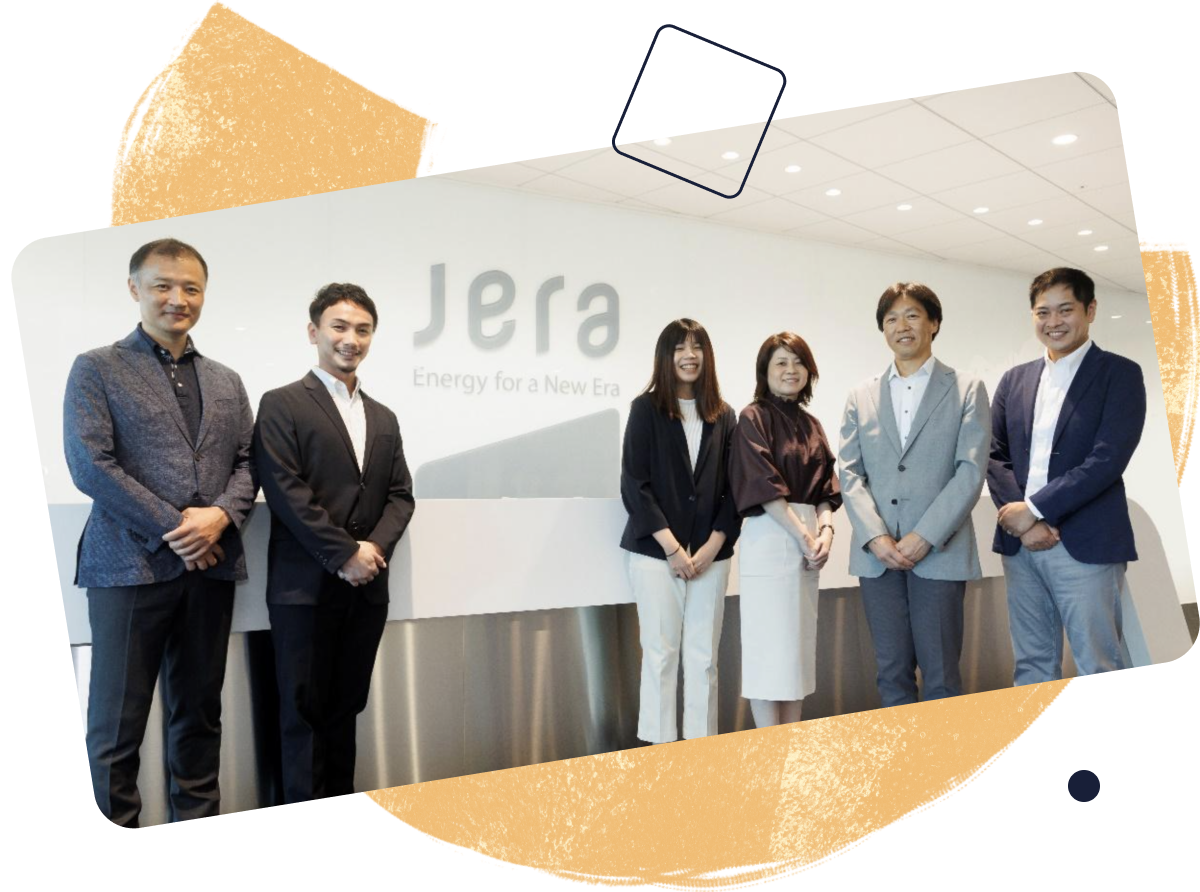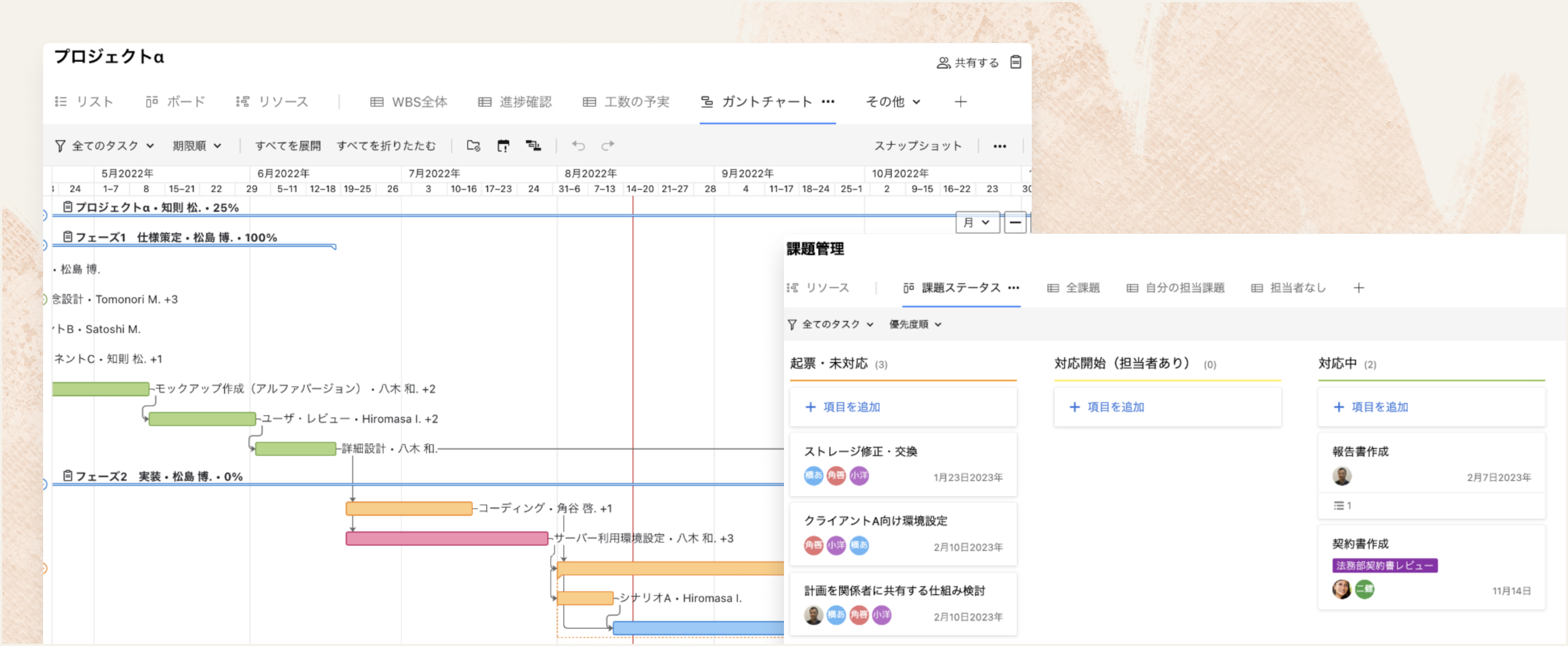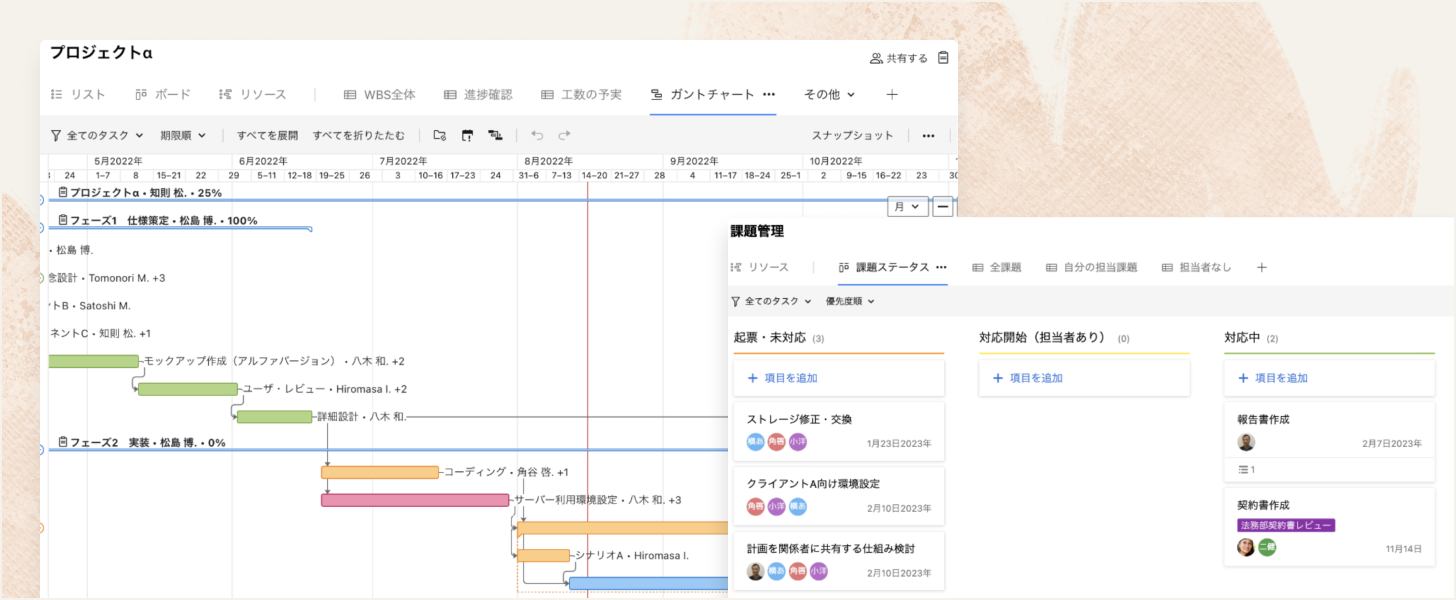How JERA Simplified Project Management and Reporting With Wrike

How JERA Simplified Project Management and Reporting With Wrike

JERA Co., Inc., one of the world’s largest power generation companies, was born out of the merger between the fuel and thermal power divisions of Tokyo Electric Power Company and Chubu Electric Power Company. The company has set up “JERA Zero Emissions 2050.” It is the first domestic energy company to take on the challenge of reducing carbon dioxide (CO2) emissions from domestic and overseas operations to virtually zero by 2050.
JERA’s ICT Strategy Department manages more than 100 DX projects a year. We asked them about the impact Wrike implementation had on their goals of becoming a data-driven company.
The economic environment of the energy business is changing dramatically, both in Japan and overseas. In order to strengthen the competitiveness of JERA’s existing businesses and to increase overall profitability through new business development, the company runs more than 100 small and large DX projects annually, which are typically managed through Excel.
While the number of projects JERA manages hasn’t increased, there have been changes in the content and nature of projects in recent years. “Infrastructure-related projects used to be the main focus, but recently there has been an increase in the number and speed of delivery of aggressive ICT projects in new business development.” explains Shigeki Uchihashi, ICT Strategy Department. “Projects that used to take several months to deliver and are now being released within a few months through incremental releases.”
Due to this increase in development speed, JERA needed to get a more timely overview of project progress and provide accurate information to the management team. The conventional method of using Excel created a range of obstacles to accurately track project status.
“We used to manage tasks and progress regularly at the individual project level, but it was difficult to aggregate meaningful information from each project when it was time to deliver quarterly reports to the management,” explains Tomonori Sato of the ICT Strategy Department. “To gather useful data, the management department had to tally and transform the data each time for reporting purposes, resulting in long processing times.”
Because of these challenges, JERA began considering introducing a new work management solution that would help decrease report preparation time and increase the ability to grasp the status of multiple projects in real time, giving a bird’s-eye view of cross-departmental project information.

“Wrike is not only superior in terms of introduction cost, but also has an easy-to-understand user interface, so you can operate it intuitively without having to open the manual.”
JERA tried other cloud services before implementing Wrike but faced challenges in terms of cost and usability. Sato recounts: “We introduced a cloud-based service that has strengths in building digital workflows, but getting started required a variety of customizations that took months to implement at a high cost.”
The company switched to Wrike because it could be introduced immediately without custom-building a new system. “Wrike is superior in terms of introduction cost and has an easy-to-understand user interface. You can operate it intuitively without even opening the manual,” says Sato.
Wrike Japan’s generous customer support also convinced JERA to choose the software. Uchihashi recalls: “When we were considering switching, I told Wrike that I wanted to create a system to support periodic inspection work at a certain power plant. It was created within an hour. With such a good response, I was confident that using Wrike for other projects would be effective and efficient.”
Before introducing Wrike, the JERA team had no standard tool for work management and everyone had to manage their own operations with Excel. They deployed Wrike internally as a standard tool for ICT project management.
Unlike Excel, which requires manual data entry for each report, Wrike offers a single platform for project work wherein users can input daily progress on a real- time basis as part of task management. As a result, the information related to the project is naturally aggregated, making it the basis of reporting without need for additional preparation.
With Wrike, the JERA team reduced report preparation time to almost zero. “Previously, we were only able to report to management once every quarter, but now we have created a system wherein we can report to management whenever necessary,” says Uchihashi. “We’ve also been able to significantly reduce the time required for reporting, which has been critical to our success.”
The necessary information items are set in Wrike in advance to allow for uniform data entry. Because of this, there are no discrepancies in information between projects and the JERA team can check the status of multiple projects side by side.
Moreover, Wrike does what JERA couldn’t do with traditional Excel: task management with Kanban and Gantt chart views. Each task can be viewed differently in Wrike, allowing the team to switch between different views of project statuses with a single click.


Yuki Matsuzawa, who is also in the ICT Strategy Department, credits Wrike’s instant updates and real-time data for helping the team stay on top of project delays. “If we find that a project is significantly behind schedule, we can now follow up on it. In the past, we couldn’t see the current situation until the report came up in Excel, so we were always lagging behind. Now, we can take action before the project goes up in flames.”
The ICT Strategy Department has also built a management system with external partner companies using Wrike as a collaboration tool, eliminating the need to share information and manage progress using multiple tools. According to Matsuzawa, this has contributed to a reduction in management time. With Wrike, the JERA teams can set detailed role settings and access management. In terms of security, they have easily established a system for cooperation with external parties that gives them peace of mind.
Six months after introducing Wrike as an effective ICT project management tool, the ICT Strategy Department established the Wrike Secretariat to promote Wrike as a company-wide standard tool for efficient project management.
“I’m mainly in charge of registering users who want to use Wrike and organizing training sessions,” explains Akiko Takeuchi of the ICT Strategy Department. “With support from Wrike Japan staff, we hold online, hands-on seminars once a quarter, which we record for anyone to see later. Our American subsidiary is also working with Wrike Japan, so the use of Wrike is progressing company-wide.”
Thanks to these initiatives, about half of approximately 5,000 employees have registered to use Wrike. The use of Wrike is spreading not only in Japan, but in the entire organization, including overseas subsidiaries.
In July 2022, JERA launched the DX human resource development program JERA Digital Academy, (or JEDI) for about 5,000 people. Through this program, as part of project management literacy for general users, JERA plans to develop and strengthen educational programs based on knowledge and content accumulated through internal Wrike user community activities.
The use of Wrike in JERA is still in the early stages, and the team aims to increase its adoption within the company. JERA plans to use Wrike not only for project management and progress tracking, but also for visualizing resource utilization to maximize employee productivity.
“In the future, we plan to further improve information-sharing and decision-making support for management, which is our primary goal,” says Uchihashi. “Using Wrike’s business intelligence function, we’ll be able to centrally visualize project information and related financial data. If we can do this, we will be able to make scientific decisions based on data — not only about the actual status of each project, but also about the probability of a project’s success and the appropriate scale of investment.”
JERA introduced Wrike as an opportunity to improve the efficiency and sophistication of IT project management. The ultimate plan is to extend Wrike usage to all projects within the company, utilize a variety of in-built product features, and develop DX human resources.
Find out how Wrike can help your business
Schedule some time to talk with one of our experts.


